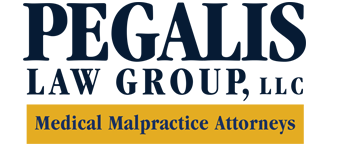-
Summer Safety Tips
Here are some essential first aid items to keep handy at home and when traveling:
- A list of medications you take with dosage amounts

- An index card, preferably laminated, that notes your emergency contacts, doctors name and phone numbers, hospital preference, allergies, medical conditions, and blood type.
- Antiseptic ointment or spray
- Hand sanitizer
- Non latex gloves
- Tweezers to remove splinters or ticks
- Aloe Vera gel or burn spray
- Mosquito and Bug repellent
- Hydrocortisone cream
- Adhesive bandages, non stick gauze pads in small and large sizes, and a roll of first aid tape
- Triangle bandage
- Dissolvable Aspirin
- Instant Cold compresses
- A list of medications you take with dosage amounts
-
Preventable Infections and Medical Malpractice
 You seek medical treatment to get better, but unfortunately, medical negligence can cause some patients to actually get worse, thanks to exposure to preventable infections. If an infectious condition that could have been prevented compromises your health, you could be eligible to seek compensation for medical malpractice.
You seek medical treatment to get better, but unfortunately, medical negligence can cause some patients to actually get worse, thanks to exposure to preventable infections. If an infectious condition that could have been prevented compromises your health, you could be eligible to seek compensation for medical malpractice. If you developed an infection after surgery or after being exposed to the infection by a healthcare provider, you could have a case for medical malpractice. For infections to fall into the category of malpractice, you must be able to prove either that your healthcare provider failed to take reasonable precautions to prevent infection or that the facility in which you received care had negligent policies regarding cleanliness and other operations that put you at risk. You must also demonstrate that the infection was solely caused by the negligence.
Let medical malpractice law firm Pegalis & Erickson, LLC help you better understand your rights. Make an appointment with a medical malpractice lawyer serving Long Island, New York by calling (516) 684-2900.
-
Talking to Your Doctor About Your Stillbirth
In the immediate aftermath of a stillbirth, it is difficult to focus on questions you have for your doctor. When you get an opportunity for a follow-up visit with your physician, it is a good idea to consider the topics you want to cover. Not only will the information help you come to terms with your experience, but it will also help you understand if medical malpractice could have played a role in the events. As you prepare for a conversation with your doctor, keep these tips in mind.
Make a List

Avoid having a conversation with your doctor without a plan. During your appointment, it’s natural to become emotional or to become sidetracked with discussing one part of the experience, so you could leave without getting the information you really want. Make a list of questions you want to ask and topics you need to address before your appointment, and consult it frequently during your conversation. When possible, bring your partner with you to help cover all of the concerns you have. Your partner can make his or her own list, or you can collaborate on coming up with questions together.
Take Notes
You’re likely to receive a great deal of information at once when you discuss your stillbirth with your doctor. Take careful notes during your consultation, rather than relying on your memory. These notes will help you clarify things and may highlight issues you need to explore further.
Get Help When You Need It
If you have concerns about medical negligence, talk to a medical malpractice lawyer about your case. Don’t directly confront your doctor about your concerns, but instead allow an experienced medical malpractice attorney investigate the case for you and determine if medical errors played a role in your stillbirth experience. Your lawyer can also help you understand what kind of compensation you may be eligible to seek.
After a stillbirth, let Pegalis & Erickson, LLC explore your claims of medical malpractice on Long Island, NY, and help you get the answers you deserve. Get a free consultation with an experienced attorney today by calling (516) 684-2900.
-
Exploring the Facts About Cord Blood
Cord blood is an increasingly promising resource in the healthcare industry. However, in the hectic environment of the delivery room, your physician may overlook discussing the option of saving your cord blood with you. As you would educate yourself about procedures you are undergoing, take time to learn the facts about cord blood before your child is delivered so you don’t miss an opportunity to preserve this potentially life-saving resource. July is Cord Blood Awareness month, making it the perfect chance to increase awareness about the issue.
What Is Cord Blood?

Cord blood is found in the umbilical cord and placenta after birth. It is rich in stem cells in their earliest possible form, which means they are more easily adaptable than other stem cell sources. Unlike embryonic stem cells, there is no controversy surrounding the use of stem cells from cord blood. The blood is retrieved after delivery, so there is no risk to either mom or baby in the process.
How Can Cord Blood Be Used?
Doctors are using stem cells from cord blood to treat more than 80 different serious illnesses, including cancers, genetic disorders, and immune system deficiencies. Cord blood is used as part of transplant medicine as it helps to regenerate the immune system. Because of the young stage at which cord blood is removed, the stem cells do not have to be an exact match to the recipient.
What Are the Challenges in Using Cord Blood?
Storage is one obstacle in using cord blood. The blood must be banked in either a public or private cord blood facility. Lack of awareness is perhaps the biggest challenge. According to the Save the Cord Foundation, cord blood from 97 percent of the 4 million births in the U.S. each year is thrown away as medical waste.
If you have a concern about medicalcare you or a loved one received, including birth injuries or medication errors, contact Pegalis & Erickson, LLC to learn about your rights. To schedule a consultation with a medical malpractice lawyer serving Long Island, New York, please call (516) 684-2900.
-
What Are the Factors Involved in Proving Misdiagnosis Malpractice?
 Misdiagnosis is a type of medical malpractice that occurs when a physician’s negligence leads to an incorrect diagnosis or delayed diagnosis that causes harm to the patient. It is important to note that misdiagnosis malpractice involves more than simply incorrectly diagnosing or delaying the diagnosis of a condition. To demonstrate malpractice, your attorney must prove medical negligence has occurred.
Misdiagnosis is a type of medical malpractice that occurs when a physician’s negligence leads to an incorrect diagnosis or delayed diagnosis that causes harm to the patient. It is important to note that misdiagnosis malpractice involves more than simply incorrectly diagnosing or delaying the diagnosis of a condition. To demonstrate malpractice, your attorney must prove medical negligence has occurred. There are three main factors in proving misdiagnosis medical malpractice. The first is to prove that a doctor-patient relationship actually existed. The second is proving that the doctor was negligent in the misdiagnosis because he or she did not provide reasonable and competent care. Lastly, your medical malpractice lawyer must show that this negligence caused harm. Errors can occur even when doctors provide reasonable and competent care, so demonstrating that the care provided was not competent is a crucial part of the case.
Does your misdiagnosis meet the criteria for medical malpractice? Call Pegalis & Erickson, LLC at (516) 684-2900 to discuss your case with a medical negligence lawyer serving Long Island and determine if you are eligible to seek compensation.
Recent Posts
Popular Posts
categories
- Uncategorized
- Infographic
- Patient Safety
- Patient Health
- Stillbirth
- Birth Injuries
- Medical Malpractice
- Medical Negligence
- Event
- Erb's Palsy
- Injury
- ER
- Video
- Cancer Misdiagnosis
- Medication Errors
- Cerebral Palsy
- Medical Negligence Lawyer
- Anesthesia Injuries
- Brachial Plexus
- Prostate Cancer
- About Us
- Men's Health
- Skin Cancer
- Breast Cancer
- Misdiagnosis
